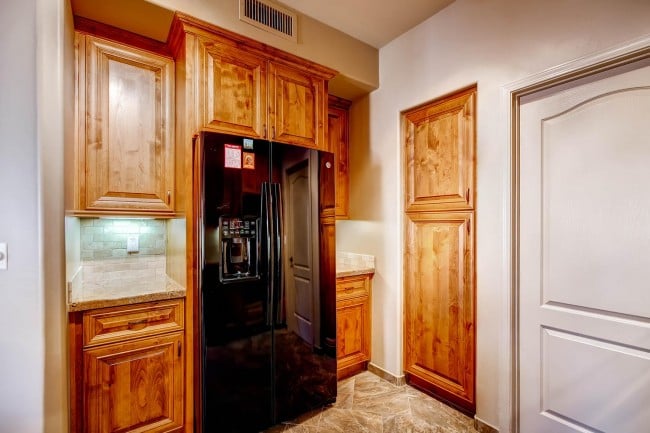
Electric Refrigerators
An electric refrigerator uses the evaporation of a liquid to absorb heat. As the water evaporates, it absorbs heat and creates the cool feeling. The liquid, or refrigerant, used in a refrigerator evaporates at an extremely low temperature so it can create freezing temperatures inside the refrigerator. Modern refrigerators work use a regenerating cycle to reuse the same refrigerant over and over again.
Gas Refrigerators
If you own or use a refrigerator where electricity is not available, chances are you have a gas-powered or propane-powered refrigerator. Gas refrigerators have no moving parts and use gas or propane as their primary source of energy. They are also odd because they use heat, in the form of burning propane, to produce the cold inside the refrigerator.
A gas refrigerator uses ammonia as the coolant, and it uses water, ammonia and hydrogen gas to create a continuous cycle for the ammonia.
Refrigerator Categories
Refrigerators are categorized according to the way frost is removed from them.
Standard Refrigerator
Standard fridges defrost when the power is turned off and the frost is permitted to melt slowly on its own or with the aid of pans of hot water placed in the freezer.
Cycle-Defrost Refrigerator
With a cycle-defrost fridge, a heater is turned on when the temperature on the evaporator reaches a preset point, keeping the refrigerator compartment free of frost. However, the freezer requires manual defrosting every few months.
Frost-Free Refrigerator
Frost from both compartments is continually melted away by a heater that turns on for 20 to 30 minutes, two or three times a day. This type of refrigerator offers the ultimate in convenience, though it’s somewhat more prone to problems and is considered less energy-efficient.
Refrigerator Maintenance
Most refrigerators have more than one light. Replacement is easiest when at least one bulb is still working. Be sure to take the burn-out bulb with you to the hardware store to make sure you buy the same type.
Whenever frost gets to be 1/4-inch thick, it’s time to defrost. Never use ice picks or similar tools to loosen ice.
Some refrigerator shelves contain cooling fluids. These racks take longer to defrost. Don’t force the process, as the racks are easily damaged. Every year or two, vacuum underneath and behind the unit. After unplugging the unit, use a crevice tool or a feather duster to help you clean the coil and all the metal parts. You may have to remove a panel to get access. This will make your unit run more efficiently and last longer. Keep the door seals and the surfaces they close against clean. This will reduce energy consumption and extend the life of the seal.
If you close the door on a dollar bill and the dollar slips out without resistance, it’s time to replace the door seal. Replacing the seal is more complicated than it looks so if you’re not especially handy, it’s a job better left to the professionals.
 Undercounter Refrigerators
Undercounter Refrigerators  Finding the Right Electric Range for Your Kitchen
Finding the Right Electric Range for Your Kitchen  In Sink Dishwasher
In Sink Dishwasher  Compact and Counter Top Dishwashers: Save Space with Style
Compact and Counter Top Dishwashers: Save Space with Style  Steam Assist Ovens
Steam Assist Ovens 

i want to be technician of refrigerators repair